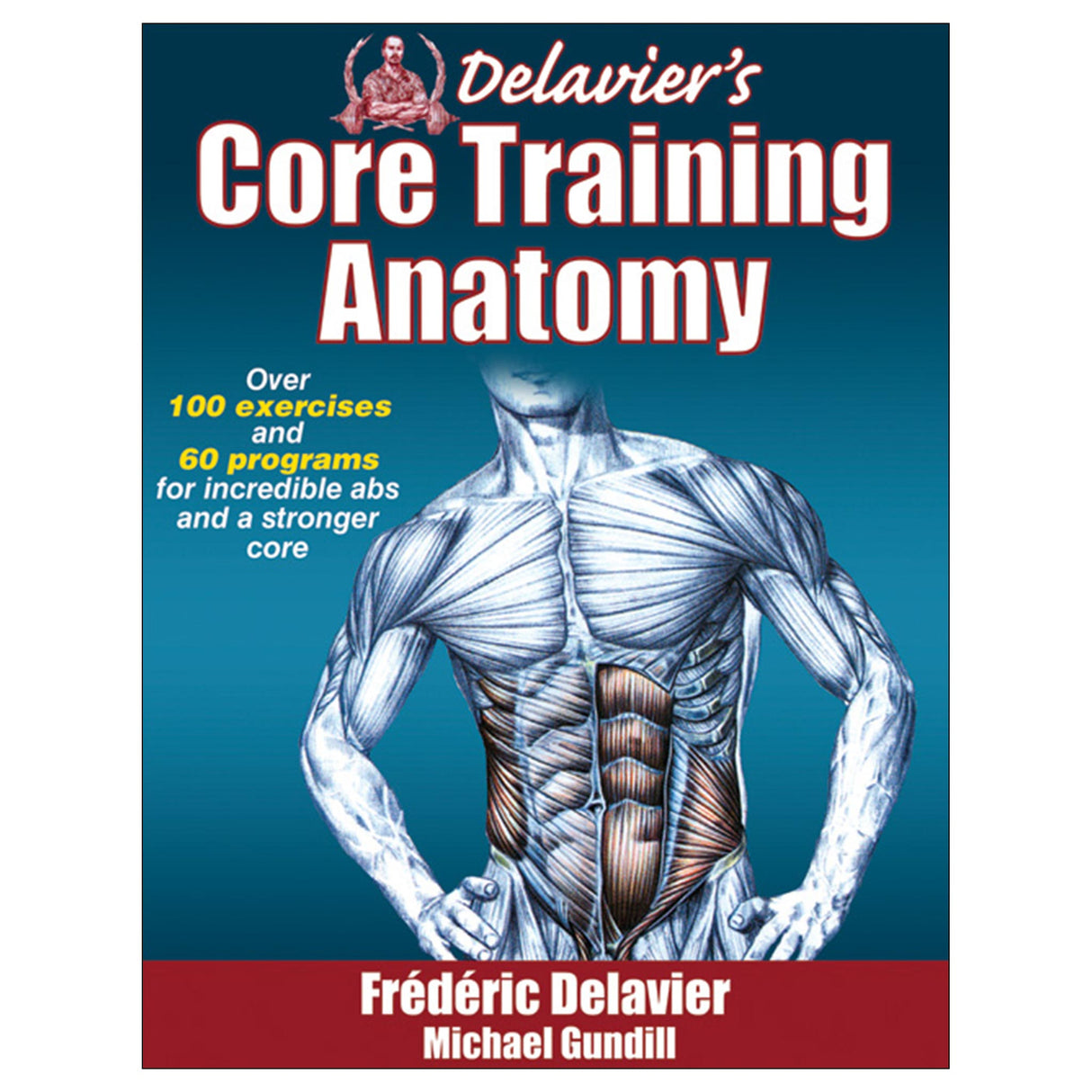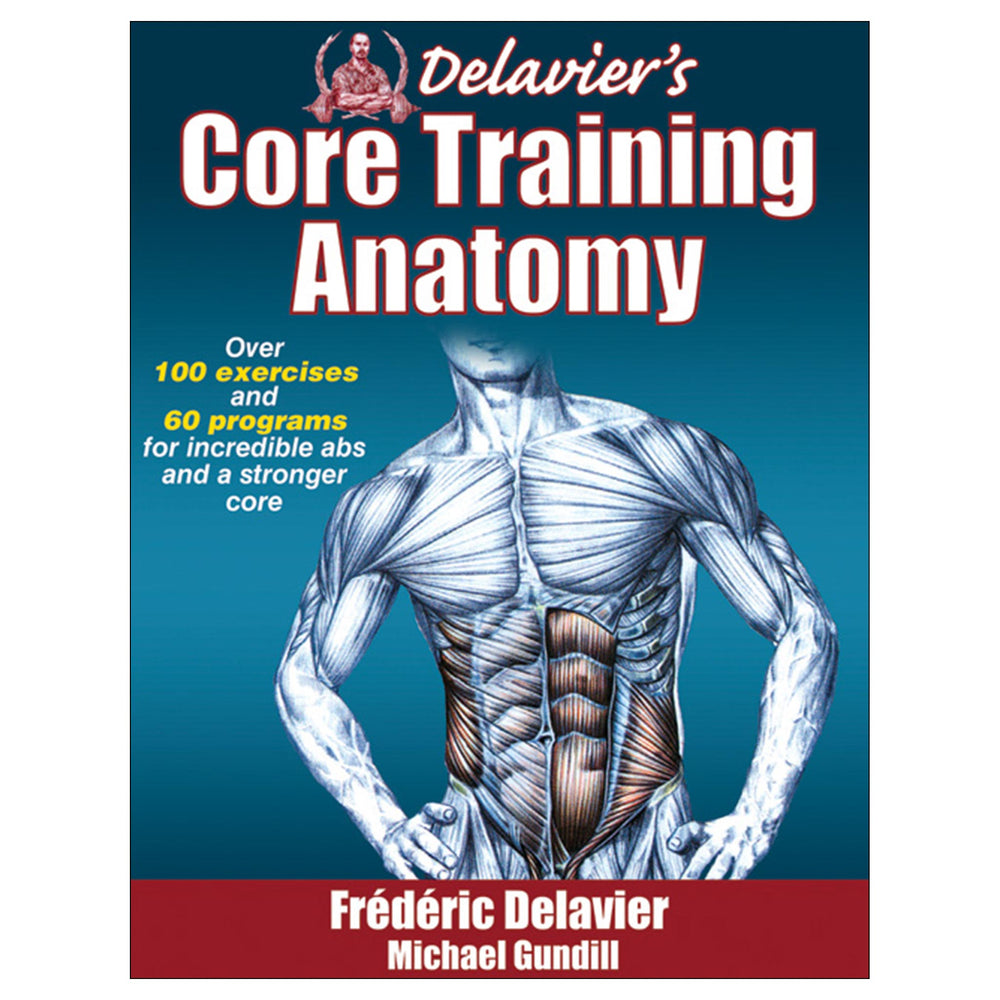Delavier's Core Training Anatomy
Author: Frederic Delavier, Michael Gundill
$39.95 CAD
Delavier’s Core Training Anatomy is your guide for increasing core strength, stability, flexibility, and tone.
Whether you’re just beginning your routine or looking to enhance an existing conditioning program, Delavier’s CoreTraining Anatomy presents the most effective exercises and workouts for the results you want. It’s all here, and all in the stunning detail that only Frédéric Delavier can provide.
With 460 full-color photos and illustrations, you’ll go inside over 100 exercises and 60 programs to see how muscles interact with surrounding joints and skeletal structures. You’ll learn how variations, progressions, and sequencing can affect muscle recruitment, the underlying structures, and ultimately the results.
Delavier’s Core Training Anatomy includes proven programming for sculpting your abs, reducing fat, improving cardiovascular health, and relieving low back discomfort. Targeted routines are presented for optimal training and performance in more than 20 sports, including running, cycling, basketball, soccer, and golf.
The former editor in chief of PowerMag in France, author and illustrator Frédéric Delavier is a journalist for Le Monde duMuscle and a contributor to Men’s Health Germany and several other strength publications. His previous publications, Strength Training Anatomy and Women’s Strength Training Anatomy, have sold more than 2 million copies.
PART 1
20 Steps to Creating the Perfect Core Workout Program
1. Set your goals
2. How many workouts should you do each week?
3. On which days of the week should you exercise?
4. Should you exercise once or twice per day?
5. What time of day should you exercise?
6. How many sets should you do?
7. Be flexible and adaptable
8. How many exercises should you do for each muscle?
9. When should you change exercises?
10. How many repetitions should you do per set?
11. How quickly should you perform repetitions?
12. Adjust range of motion in the exercises
13. How long should a workout last?
14. How much rest time should you take between sets?
15. Determine the most appropriate weight for each exercise
16. When should you increase the weight?
17. Determine rest time between exercises
18. Learn to choose exercises that work for you
19. Know when to change your workout program
20. Taking a vacation?
Keep a Workout Notebook
Making Progress
PART 2
Increase the Visibility of Your Abs
Exercising Your Abs for a Smaller Waist
Intensity First!
Diet as a Way to Slim Your Waist
Diet Plus Workout Synergy
Improving the Effectiveness of Your Diet
Role of Supplements
BCAAs for Losing Belly Fat
Calcium: The Anti-Belly Fat Mineral
PART 3
Basic Exercises to Sculpt Your Abs
Anatomical Considerations
Beware of Fake Abdominal Exercises!
If You Have an Inguinal, Femoral, or Abdominal Hernia
Rectus Abdominis Exercises
Crunch
Lying Leg Raise
Seated Leg Raise
Oblique Exercises
Apollo’s Belt
Twisting Crunch
Side Crunch
Stability Exercises
Static Stability Exercise, Back Against a Wall
Plank
Breathing Exercises to Improve Athletic Performance
Lying Rib Cage Expansion With a Weight
Diaphragm Contraction
Stretching the Abdominal Muscles
On a Stability Ball
Stretching the Hip Flexors
Tilting of the Pelvis
Abdominal–Lumbar Balance
Lunge
Stretches for the Low Back
Preventing Low Back Pain
Relaxation Stretch on a Stability Ball
Hanging From a Pull-Up Bar
PART 4
Advanced Exercises and Techniques
Three Difficulties of Ab Work
How to Isolate Upper Abdominal Work From Lower Abdominal Work
Why Are the Lower Abs So Hard to Develop?
1. It is difficult to recruit that part of the muscle
2. Lower abs lack strength
3. It is difficult to isolate the lower part
4. Lower abs are not robust
5. Some exercises are inappropriate
Three Zones of Attack for Total Development
Relative Importance of Each Zone
Getting a Head Start on Recovery
Exercises for the Upper Abdominal Muscles
Double Crunch
Sit-Up
Exercises for the Lower Abdominal Muscles
Pelvic Tilts on the Pull-Up Bar
Leg Lift
Hanging Leg Raise
Exercises for the Obliques
Hanging Leg Raise to the Side
Lying Twist
PART 5
Ab and Core Exercises Using Machines and Accessories
Purpose of Home Equipment
Professional Machines
Exercises for the Upper Abdominal Muscles
Crunch Machines
Swiss Ball Crunch
Rocking Machine Crunch
Standing Cable Crunch
Exercises for the Lower Abdominal Muscles
Ab Coaster
Exercises for the Obliques
Cable Twist (or Using a Machine)
Side Bend
PART 6
Workout Programs for Abdominal and Core Muscles
Six-Pack Programs
Beginning Programs
Advanced Programs
Very Advanced Programs
At-Home Programs Using Accessories
Programs Using Equipment in a Gym
Programs to Reduce Belly Fat
Programs to Reduce Love Handles
Programs to Highlight Apollo’s Belt
Programs for Well-Being
Programs for Cardiovascular Health
Programs to Relax Your Back Before Sleep
Programs to Help Protect Your Lumbar Spine
Programs to Help With Bloating and Other Digestive Problems
Sport-Specific Core Programs
Phase 1: Basic Muscle Conditioning Programs for Beginners
Phase 2: Working Toward Circuit Training
Phase 3: Workouts to Improve Overall Physical Qualities
Phase 4: Working Toward More Specific Training










